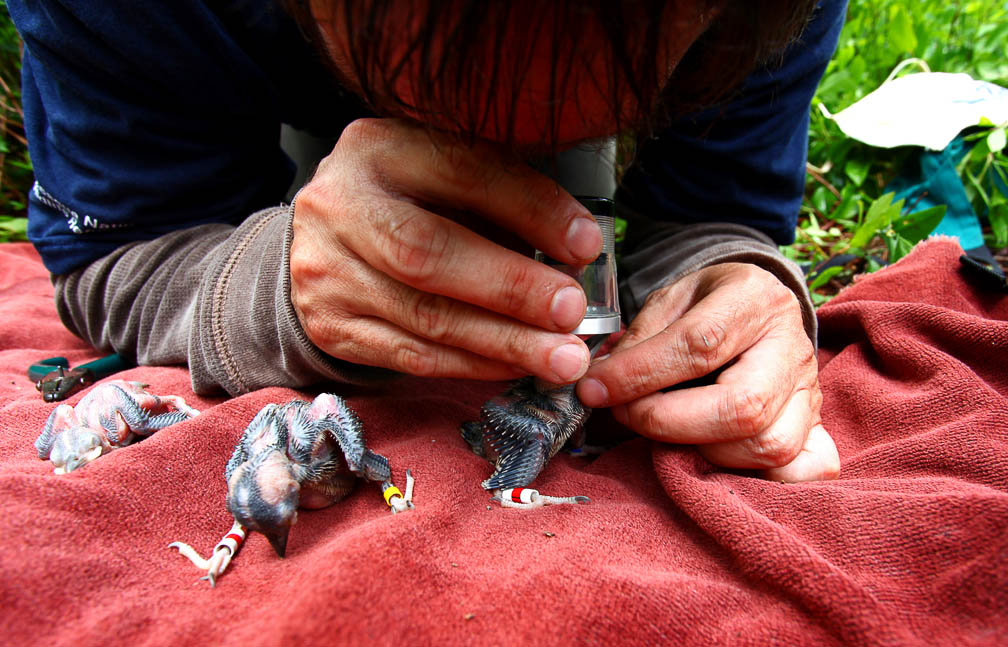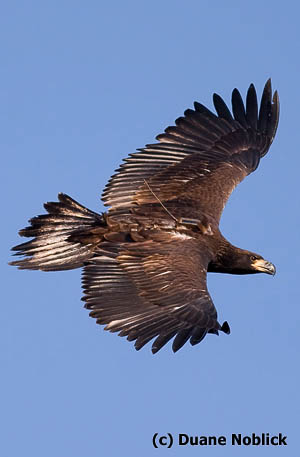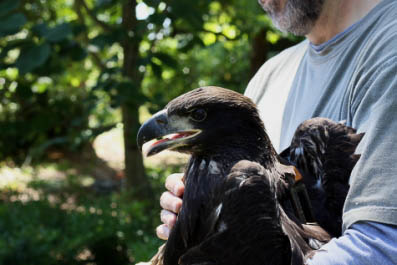Tracking Azalea

2009 Red-cockaded Woodpecker record breeding season
May 2, 2009Flight of Hope
May 4, 2009
Written by Bryan Watts
May 3, 2009

Azalea (banded HH), in flight above Norfolk Botanical Garden in 2009. Photo by Duane Noblick.
Azalea is a young eagle hatched from the nest at Norfolk Botanical Garden. She is one of a three-chick brood that has been followed by web-cam viewers from around the world during the 2009 breeding season (NBG EagleCam). On May 20, 2009 CCB biologists fitted Azalea with a 70-gram, solar-powered, satellite-GPS hybrid transmitter that is programmed to record locations hourly during the day and another location at midnight. The unit stores locations in an onboard database and then transmits the database via satellite to CCB. Azalea fledged on 13 June and after spending nearly two months in the lower tidewater area, she dispersed and has been spending time near the mouth of the Potomac River. You can follow Azalea’s movements on the EagleTrak website with an accompanying blog prepared by raptor enthusiast and CCB Research Associate, Reese Lukei.

Bryan Watts holds Azalea to show the Norfolk Botanical Garden audience the satellite transmitter she wears, May 2009. Photo by Stephen Coleman.
Azalea is part of one of the largest eagle tracking projects in the world designed to record movements throughout the Chesapeake Bay and beyond in an effort to understand how eagles use the landscape and how they relate to humans. Over the past two years, CCB has deployed transmitters on 67 eagles, including three golden eagles. Units have been deployed on birds from a number of age classes, including nearly twenty nestlings. To date, transmitters have recorded more than 400,000 GPS locations and are beginning to reveal patterns of movement within the Bay, as well as, in and out of the Bay. Incredibly, nestlings from the Bay have traveled as far north as Maine, New Brunswick, and Labrador. Night locations have been used to delineate more than 200 communal roosts within the Chesapeake Bay and have supported previous CCB research that has identified concentration areas for non-breeding eagles. In the long term, information gained from these birds will help us to better manage the species throughout eastern North America.

Reese Lukei looks-on as Libby Mojica adjusts the transmitter harness on Azalea. The satellite transmitter is attached to a harness custom-fitted to each eagle, to ensure maximum comfort and full mobility. Photo by Stephen Coleman.
Tracking maps for all of these eagles may be accessed on CCB’s EagleTrak website and on www.wildlifetracking.org.
Project Partners:
The Center for Conservation Biology (CCB)
Norfolk Botanical Garden (NBG)
Nuckols Tree Care, Inc.
Project Sponsors:
Virginia Beach Audubon
Reese & Melinda Lukei
Mr. & Mrs. Eugene F. Crabtree
Jack Stokes
More than 50 adoptive parents & counting… view the list and chose to help to support the cost of Azalea’s satellite transmitter here




